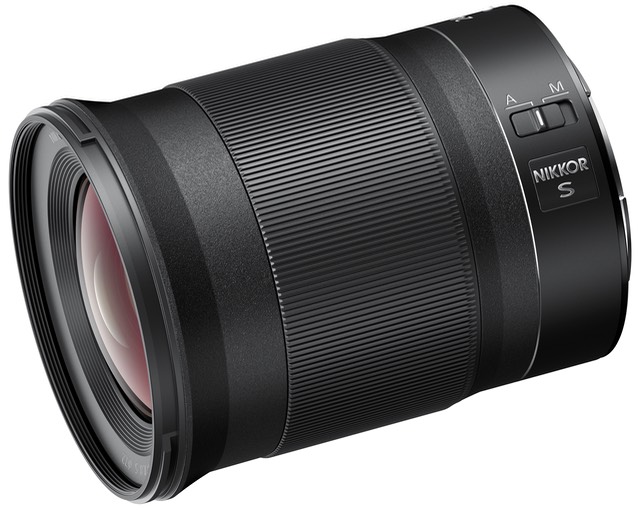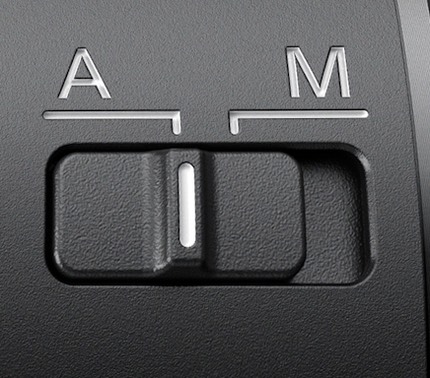= = = = = = = = = = = = = = = =
Nikon Z Camera Owners: Up-to-date information and new articles by Thom Hogan are available at zsystemuser.com, which continues to follow all Nikon mirrorless camera news and information in 2026 and the future.
= = = = = = = = = = = = = = = =

What is It?
The 24mm f/1.8 S is the fourth in Nikon's non-exotic prime lens series for the Z mount cameras. We previously received the 35mm, 50mm, and 85mm trio that satisfies the bulk of the prime demand. With the 24mm (and followed five months later by the 20mm), Nikon has rounded out the set. I don't expect additional f/1.8 lenses until Nikon completes adding new, much needed options to the Z lens lineup, including a range of zooms, macro lenses, telephoto zooms, faster primes, and yes, compact primes (probably f/2.8).
If it seems to you that each new f/1.8 prime gets bigger, that's basically true (the 20mm is even larger than the 24mm). The 24mm f/1.8 S is almost 4" (97mm) long and has a 3.1" (78mm) diameter up front (barely tapered up from a barrel that is mostly 2.8" (~70mm) from the lens mount forward). At virtually one pound (450g), the lens isn't light, either.

As with other f/1.8 primes for the Z system, there's only one control, an A/M focus switch. Most of the front of the barrel is a really wide and has difficult-to-miss fly-by-wire focus ring. Nikon supplies an HB-88 petal type lens hood that bayonets onto the lens. The hood can be reversed, but it significantly widens the front of an already wide lens when do that, meaning the lens needs a larger slot in your camera bag than you'd expect for a 24mm prime.
The front filter size is 72mm. Nikon seems to have no respect for filter consistency any more. In just the f/1.8 S lineup we now go 77mm, 72mm, 62mm, 62mm, 67mm. So, carry a set of Nikkor primes for the Z system and you need four filter sizes or one 77mm filter size and three step-up rings. A sad miss for a company that used to pride itself on not burdening the photographer with a proliferation of filter sizes.
Inside the lens is a slightly complex 12 element design in 8 groups, and four of those elements are aspherical while one is ED glass. The "slightly complex" also comes from the fact that the 24mm uses a dual autofocus motor set up that moves two separate element groups to keep focus performance high. Nano coating helps reduce internal flare, while fluorine coating keeps the front element clean. The lens is weather-sealed quite well, as seems to be the case with all Z lenses so far. A nine-blade aperture diaphragm sits inside, but like many faster Nikon lenses, be aware that f/16 is the minimum aperture.
Minimum focus is 10" (0.25m), which produces a not particularly exciting 1:6.6 maximum magnification ratio. I was hoping for a little bit better than that, but most users aren't going to find this an issue.
The 24mm f/1.8 S costs US$999, and is made in China.
Source of reviewed lens: purchased
How's it Handle?
Something that's now starting to bother me on the Z-mount Nikkors needs to be discussed, particularly with the f/1.8 primes: they have really wide focus rings and very plastic (slippery) surfaces elsewhere. The issue with these two attributes is unmounting a lens from the camera.
Typically, I am holding the lens release button with my left middle finger and using my right hand to rotate the lens to take it off the camera. The problem is that where I want to naturally grab the lens, there's a focus ring that just slips as I touch it and I can't twist the lens. Okay, so I reach around the grip to try to grab the body of the lens: slippery plastic.
How's it Perform?
Focus: As with the other S Nikkors, you'll find very fast and precise autofocus. This is a distinct difference from the f/1.8G F-mount lenses, which tend to be more stately in their focus response. In particular, the 24mm f/1.8 S is much faster at long focus changes than my 24mm f/1.8G.
Sharpness: Unlike previous S Nikkors I've reviewed, the 24mm has more acuity falloff from center than most of the others. You don't totally see this, though, with lens corrected software adjustments in play. Be careful of reading tests to make sure you know whether they're testing corners from raw, uncorrected data, or corners from corrected data (in raw converter or JPEG). The linear distortion makes this lens a bit wider than 24mm uncorrected.
The lens is sharpest at f/4, and at f/4 it's wicked sharp in the center, or what I call superb (in the past I’ve also used the word exceptional). The 50mm f/1.8 remains the sharpest of the Z primes, but all the f/1.8 S primes show strong central sharpness, particularly so when stopped down a bit. Wide open the lens is still excellent, but that improvement at f/4 is something the acuity purists are going to want when they’re shooting landscapes or city scenes with a Z7.
The corners are slightly more problematic on the 24mm than they were on the 35mm. Technically, they hit very good to excellent at f/2.8, but they're visibly different from the center sharpness, so you can see the falloff of acuity from center to edge much of the time when you pixel peep. Moreover, my 24mm f/1.8G seems a bit better and more balanced edge-to-edge up through f/5.6.
This lens seems to have some clear astigmatism and coma, unlike what we’ve seen in the previous S primes. It also has some obvious spherical aberration, all of which explains the corner falloff in acuity.
Linear distortion: Somewhat less barrel distortion than I was expecting, at around 2% barrel, enough that you have to correct for it if you have straight lines in your images. The problem is that the distortion has a small bit of mustache (non-linear) element to it. For most landscape work, I doubt you’d want to correct this, though. The real problem comes with architectural photography, where straight lines need to be straight, not wavy as you move from center.
Vignetting: As is becoming obvious, a lot of the modern lens designers are choosing vignetting as the attribute they'll not bother trying to correct. Wide open this lens approaches 3 stops of darkening in the corners. It never really improves to the levels I'd like to see when stopped down, staying above one stop at apertures up through f/4. Only at f/5.6 would I call the vignetting acceptable.
Chromatic Aberration: Though it tests low in lateral chromatic aberration, I clearly see some purple edge fringing on leaves-against-sky in the corners that needs correcting when used at wider apertures, something that’s typical with fast primes (usually caused by longitudinal chromatic aberration, which the 24mm clearly has).
Flare: For a wide angle lens, very well controlled. You can provoke small rainbow baubles near the light source in some situations, but I see no large across-the-frame defects as I often see with wide angle lenses.
Bokeh: Generally really wide lenses aren't an optic on which you're concerned about bokeh (except for perhaps nighttime video with light sources in the background, where you'll get a somewhat bright rim on the out-of-focus circles using the 24mm f/1.8 S). Like most recent Nikkors, the 24mm f/1.8 S has what I'd call a well-behaved fall-off from focus plane to out-of-focus. The problem, of course, is that depth of field when you go this wide means you're not going to see that unless you have a clear in focus near element with a clear out of focus distant element.
Final Words
While it might not seem like I'm praising the 24mm f/1.8 S all that much, let's put that in a bit of perspective: it's a really solid performer, just not the exceptional performer that many were hoping for. However, I've seen a lot of other 24mm primes that don't perform as well as the 24mm f/1.8 S, so context is important.
The corners are the disappointment on this lens. While they come into very usable acuity at f/4, I don't like the fact that the as you move back towards the center you can see the difference when you pixel peep. Of course, the viewer of your image isn't going to be pixel peeping—at least I hope not—so what they'll see is pretty solid performance without the messy smearing you often see in the corners of wide angle lenses even when not pixel peeping.
Vignetting also is a bit of an issue for me on this lens, as it becomes a problem with skies in landscapes unless corrected, and then you have to watch out for noise propagation given how much correction you need. Event shooters probably won't have a problem with the vignetting, but landscape and architectural shooters might. Of course, short of shooting with a tilt/shift lens, what other really wide angle lens can say it's near perfect when it comes to corners and vignetting?
Thus, I'd say our expectations exceeded Nikon's delivery with the 24mm f/1.8 S. Given how great the other S lenses have been to date, we were probably expecting miracles that might not come at this price point and angle of view.
If you're mostly using this type of lens at f/4 to f/8 (f/11 starts seeing clear diffraction impacts on a Z7), I don't think you'll be disappointed. If you're mostly concerned about central area at f/1.8 through f/4, I also don't think you'll be disappointed by this lens. It's just not the jack-of-all-trades, does-everything-perfectly wide angle that a lot of us were hoping for.
Finally, I should note that with 45mp sensors and completely new optical designs, the "standards" of a lot of shooters have gone up. It's that group that will probably find the 24mm f/1.8 S to be on the slightly disappointing side, despite the fact that technically it is providing very high MTF numbers that we would have spent a lot more money to attain not too many years ago.
Which leads me to say this: the 24mm f/1.8 S is a very good lens, it's just not a great lens. It has weaknesses you'll want to be aware of, and it might not shine (literally) in the corners as much as you'd like when used wide open. Which also leads me to this: at US$1000 it seems a wee bit pricey (the f1/8G is three-quarters the price). If Nikon starts offering discounts on the 24mm f/1.8 S in the future, that's when most people should probably pick it up. At list price, I feel it's a little overpriced.
Recommended (conditional) (2020, 2021, 2022)